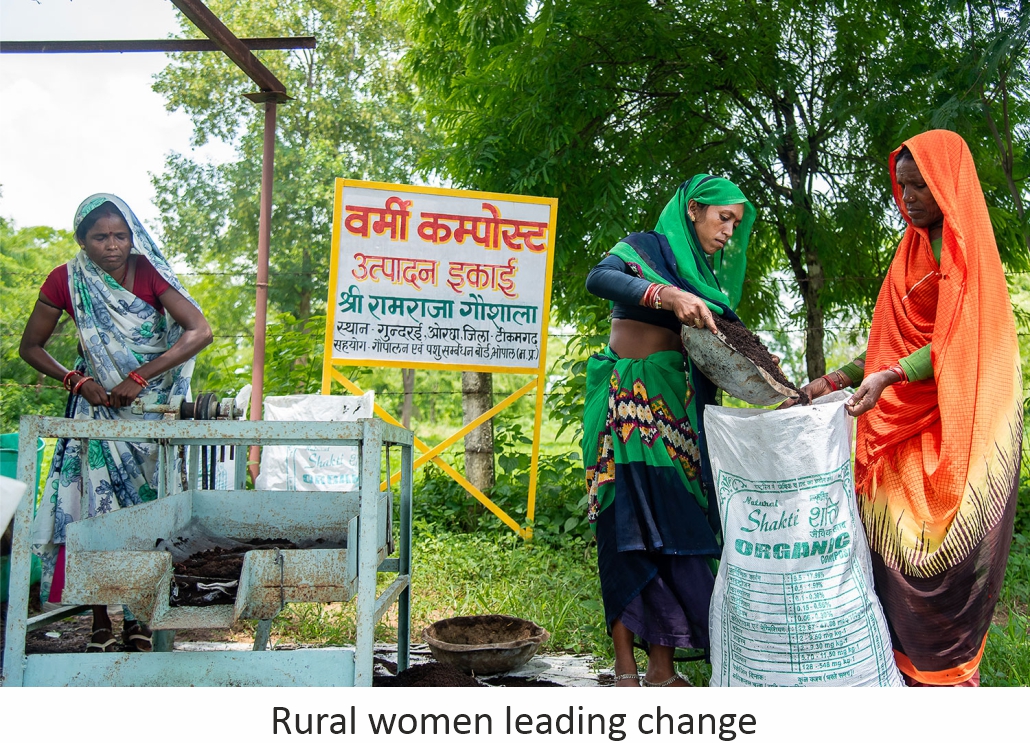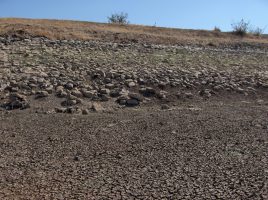Greater Gender Inclusion and Attention to Contextual Effects of Climate Change Is the Way Forward!
Women’s close association with sustainable livelihoods, especially among the underprivileged sections of society, is well known. Climate change will (unarguably) affect the ability of vulnerable communities to provide for their everyday needs and existence. Women in ecologically critical locations are acutely aware of the threat that climate change poses to livelihood security in their immediate environment even though they may be unable to articulate the same in sophisticated language.
 It is well established that women have been at the forefront of pointing out the harmful consequences of environmental and climate changes. Although Silent Spring (by Rachel Carson in 1962) did not explicitly discuss climate change, it brought home the environmental harm caused by the indiscriminate use of pesticides. From Rachel Carson, Vandana Shiva to the young Greta Thunberg, women have been alerting the world to the devastating effects of unbridled capitalistic exploitation of the natural world that has unleashed climate change.
It is well established that women have been at the forefront of pointing out the harmful consequences of environmental and climate changes. Although Silent Spring (by Rachel Carson in 1962) did not explicitly discuss climate change, it brought home the environmental harm caused by the indiscriminate use of pesticides. From Rachel Carson, Vandana Shiva to the young Greta Thunberg, women have been alerting the world to the devastating effects of unbridled capitalistic exploitation of the natural world that has unleashed climate change.
Some well-established research points to the fact that women in the South will be more affected by climate change than men in those countries and that men in the North pollute more than women in these countries. Women have generally been seen through the twin prism of being vulnerable and virtuous on the climate front as Arora-Jonsson (2011) points out. She argues that this perpetuates a North–South binary with the vulnerability being attributed to southern women and virtuosity (climate activism) being attributed to northern women, as a result of which greater responsibility is being placed on women everywhere. She also argues for a more nuanced approach to understanding the effects of climate change on women. Citing research on women’s vulnerability to flooding in Odisha, it is shown that it is difficult to speak of gender effects without speaking of caste and class, which play a major role in defining women’s vulnerability in a country like India.
Gender inequalities are also perpetuated by gender norms that place greater responsibility for running the household on women despite the male being constructed as the breadwinner. In some work I did in the 1980s on women and forestry during the height of the fuelwood crisis, I found that women were more inclined towards planting tree species that provided small timber, fuel, fodder, fruit and shade while men, on the other hand, had been quickly seduced into favouring eucalyptus trees that provided quick monetary returns (Kaur 1991). Research from that period found that eucalyptus had not been an environment-friendly choice while the tree species favoured by the women would have not only been environmentally friendly but also provided means of subsistence to these economically vulnerable households. As non-market provisioning for the household is often the responsibility of women, the need to mitigate climate change that adversely affects livelihoods needs to be frontally addressed.
What we need to also ask is if women are being given the responsibility of helping to mitigate the effects of climate change, are we also equipping them with the resources or capacity to do so? Two important research findings point to the way forward: gender balance on environmental committees is necessary as it leads to more sustainable decision-making and factoring in contextual harms of climate change is absolutely necessary to equip women everywhere to fight the harmful effects of climate change.
References
Arora-Jonsson, S. 2011. Virtue and vulnerability: Discourses on women, gender and climate change. Global Environmental Change 21(2), pp. 744-751
Kaur, R. 1991. Women and forestry in India. Pre-Working Paper #714, World Bank
Prof. Ravinder Kaur
Ravinder.Kaur@hss.iitd.ac.in
The author is a Professor at IIT Delhi
This article is written for Development Alternatives






Leave a Reply